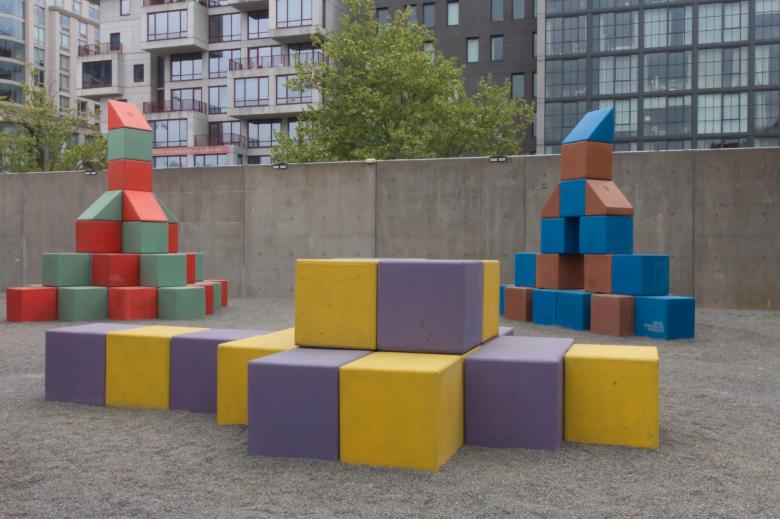3. May 2024
All photographs by John Hill/World-Architects
For Le Grand Soir, which opened last month and is on display for two years in the courtyard of MoMA PS1 in Long Island City, Queens, French-Moroccan artist Yto Barrada stacked colored concrete blocks into towers inspired by the tradition of constructing human pyramids in Morocco as well as the country's brutalist architecture.
In 2019, MoMA PS1 celebrated the 20th anniversary of the Young Architects Program, in which emerging architects were invited to propose designs for temporary installations in the museum's courtyard, by — of all things — putting it on hiatus. This was unfortunate, as World-Architects looked forward to the annual unveiling of the winner and, a few months later, the opening of the installation at the start of the summer; and over its twenty years the program gave early commissions to architects who since went onto success and became familiar names, from SHoP Architects in 2000 and nARCHITECTS in 2004 to WORKac in 2008 and SO–IL in 2010. Little did we know five years ago, but Pedro & Juana's impressive Hórama Rama became the last YAP installation.
Although Yto Barrada's Le Grand Soir is not a continuation or reworking of the YAP, its size, “function,” and inspiration point to the appropriateness of architectural installations in the MoMA PS1 courtyard, be they created by architects or artists. World-Architects stopped by the museum soon after Le Grand Soir opened to the public on April 25 to see how the sculptures work in the courtyard setting.





